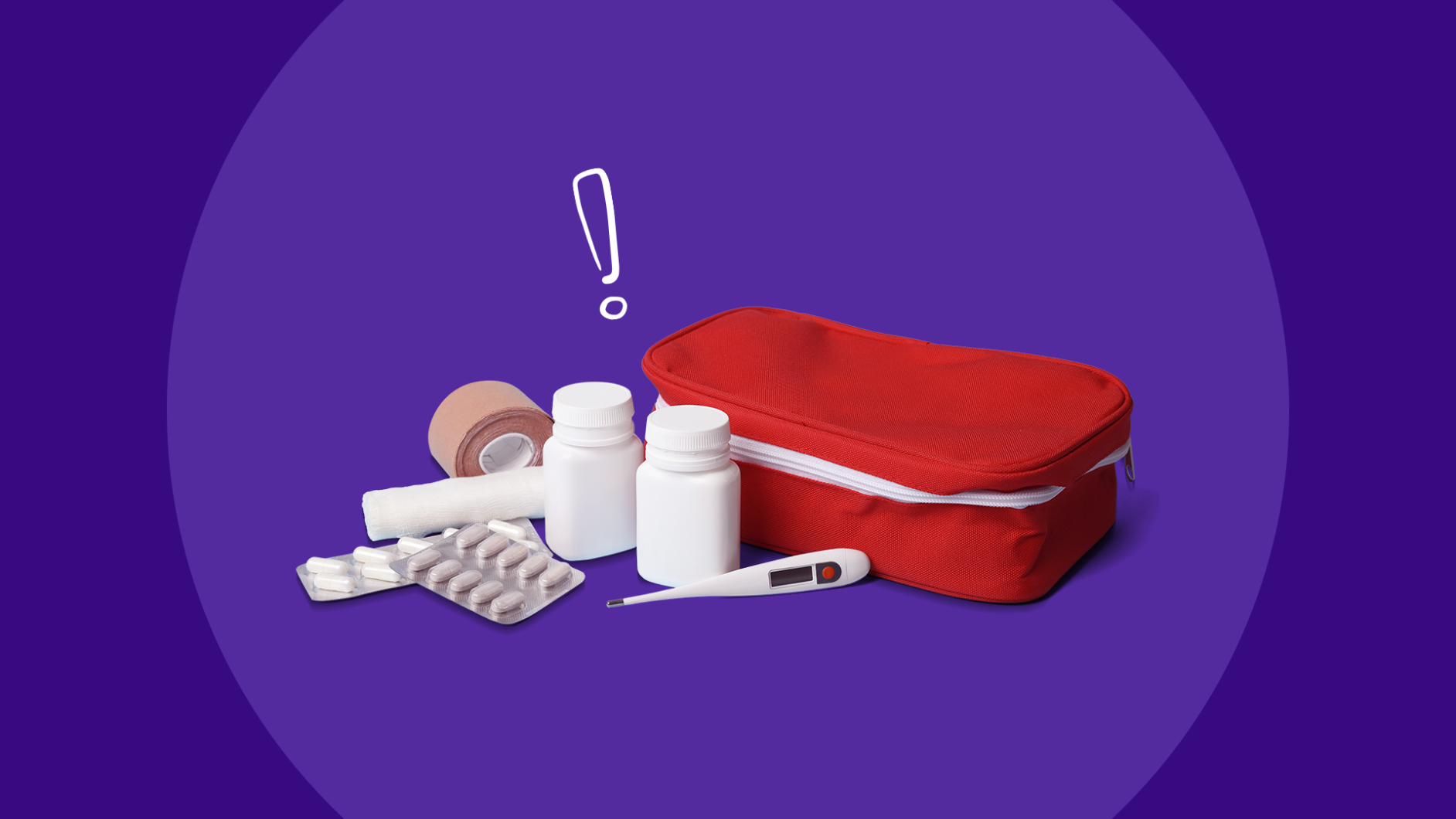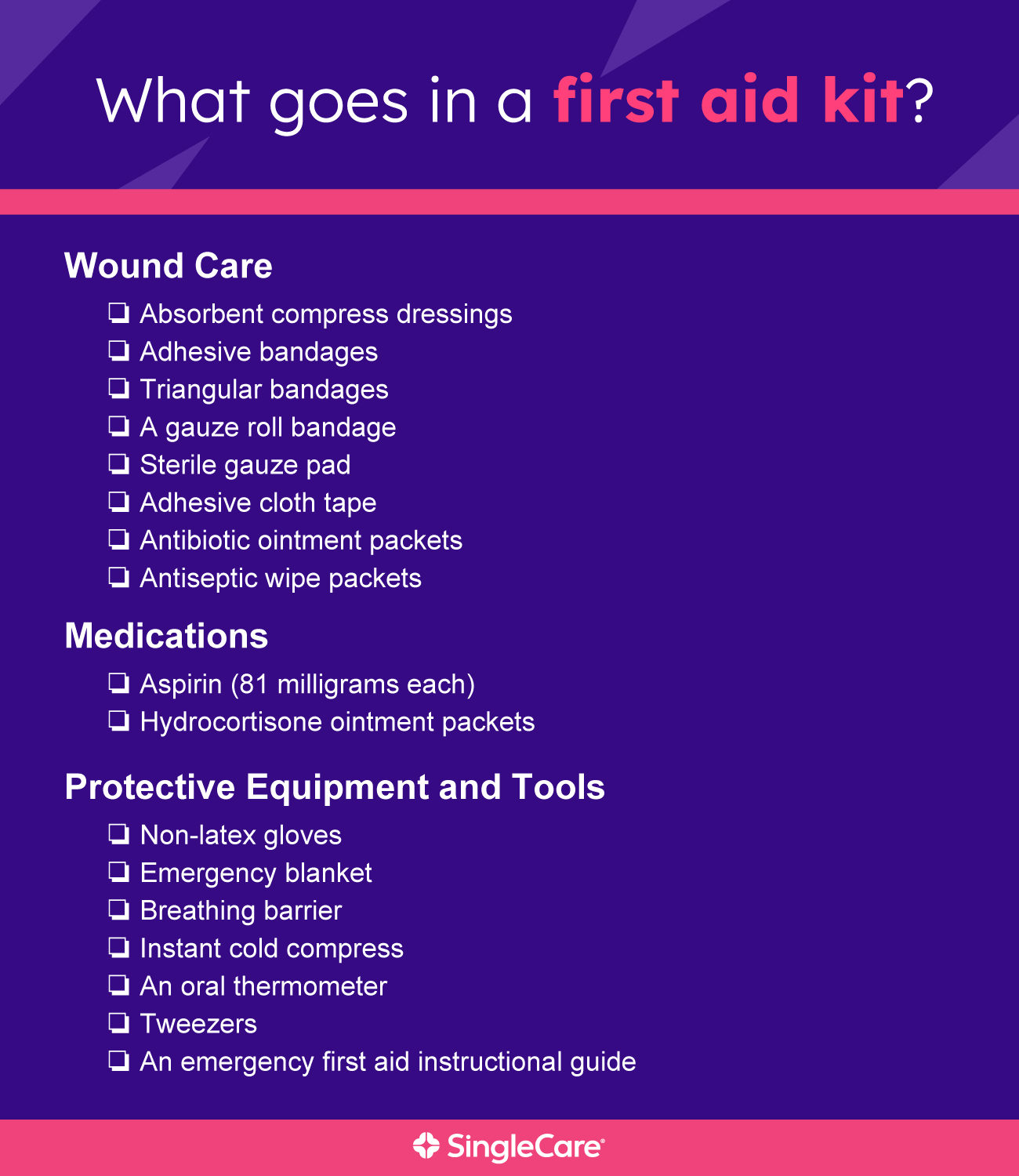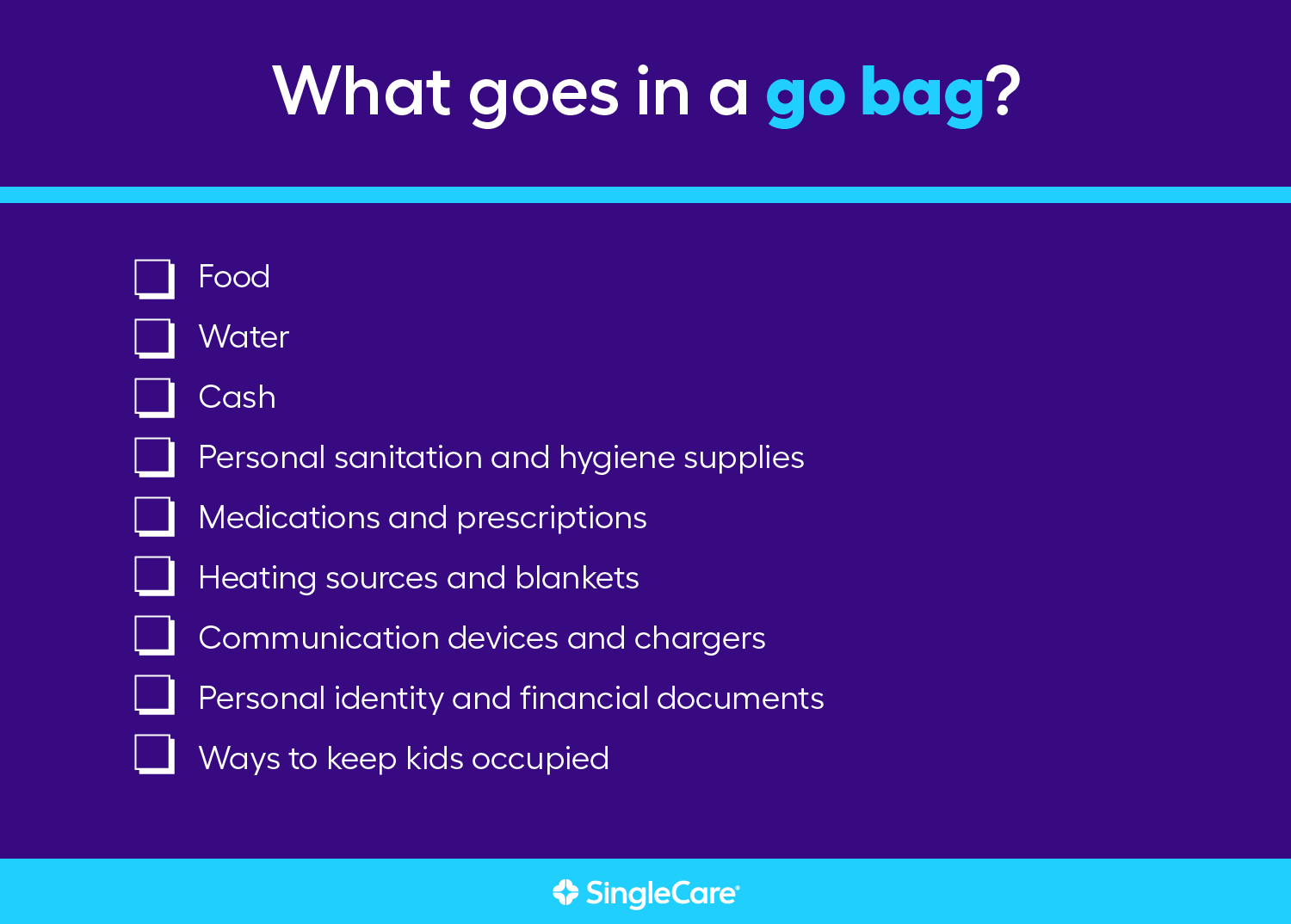Emergencies and natural disasters are a threat to everyone, and for people who need prescription medications to treat serious medical issues, the threat doesn’t stop once a pandemic subsides, the floods recede, or the fires go out.
If you take life-saving medication or are a caregiver for someone who does, practicing effective emergency preparedness should be part of your care strategy.
What is emergency preparedness?
Emergency preparedness is the act of carrying out a few well-known actions that increase your level of safety during a crisis.
Some emergencies are international news—like a hurricane approaching a major city. But not every emergency makes CNN. A family member can unexpectedly fall ill, or a gas leak can require your whole block to evacuate.
What are the four phases of emergency preparedness?
These are the four phases of preparedness:
- Mitigation
- Preparedness
- Response
- Recovery
Whether you know it or not, you and everyone in your community are in one or more of these phases right now.
The mitigation phase involves activities that limit the damage an emergency could cause. For example, removing dry branches around a property could prevent a brush fire from reaching the home.
The preparedness phase is training for events that can’t be mitigated. An out-of-control forest fire may require homeowners to evacuate no matter how thorough their prevention efforts are. Activities may include creating an emergency kit or go bag.
The response phase consists of actions taken during and immediately after the emergency. A parent evacuating their family as a fire approaches is an example of response phase activity.
The recovery phase begins once life gets (mostly) back to normal. Life and property are no longer threatened, and schools and businesses have started to reopen. Now, the focus turns to repairing physical, financial, and emotional damage caused by the emergency. Recovery includes determining how to limit the damage from future similar emergencies and restart the mitigation phase.
What kind of emergencies should you prepare for?
Based on where you live, some emergencies are more likely than others. Understanding the risks in your area can guide your thinking as you develop an emergency or natural disaster preparedness plan.
Emergency planners categorize disasters into three categories.
- Minor emergencies (e.g., a residential house fire)
- Limited and potential emergencies (e.g., localized flooding)
- Major disasters (e.g., an earthquake)
Every community is subject to different hazards, and every adult has different responsibilities. A single pet owner living in a floodplain will make different preparation plans than a mother of five in a major city prone to earthquakes.
Consider which emergencies are most likely in your area and what would be required of you in every case.
Using medications during an emergency
Considering your medication needs during an emergency could be a life-or-death decision. Everyone who requires medication should consider how they would maintain their supply during the types of emergencies they are most likely to experience.
The preparedness phase is the most important one to think about to ensure access to medication. What would you do in case of an unexpected disaster you can’t mitigate, like a strong earthquake or a 100-year flood? These are some things to consider.
Keep an up-to-date list of medications, including dose and indicated use
Emergencies are stressful times, and you don’t want to rely on memory if you need to replace medications for yourself or the people who need them. What if you need a pill you’ve been taking for years, and you’re incapacitated? Will a search and rescue team know what medication you need?
Know how much medication is on hand
Maintain a calendar or medication app that shows when your medication will run out. This will help you remember to order refills and provide a quick reference in case of an emergency. You’ll be able to see just how large your supply is, and if you have advance warning of an impending emergency that could disrupt access to your pharmacy, you’ll know whether you need to quickly obtain early refills.
Place medication bottles or packages in water-tight containers
Medicine storage containers can take many forms, from a large stack of drawers in a hospital to a simple plastic pill box. If heavy rain or flooding is a hazard for your community, consider storing your medications in a water-tight container like a plastic food storage bin.
If flood water comes into contact with your medications, it’s strongly recommended that you not use them unless absolutely necessary. Flood water can be contaminated and affect the safety and effectiveness of the medication.
Have a cooler available for medications that need refrigeration
Natural disasters like forest fires, earthquakes, and hurricanes can take the power grid offline. If your refrigerator stopped working, how would you keep your medication cold? Anyone who takes refrigerated medications should keep a small portable cooler on hand. Gel travel coolers are less messy (though ice will work, too).
For insulin medication used to treat high blood glucose associated with diabetes, refrigeration is recommended after the first use but is not absolutely necessary. Insulin can usually be left unrefrigerated for up to 28 days after opening as long as the temperature stays between 59 and 86 degrees Fahrenheit. However, refer to the specific storage instructions provided with your insulin product.
If you live in an area with extreme temperatures, consider how you would keep your insulin within the correct temperature range in case of an evacuation. For example, a cooler can be used to keep insulin safe. Insulin isn’t dangerous to take if exposed to extreme temperatures; it simply loses effectiveness. Since insulin is a life-sustaining drug for diabetes Type 1 patients, keeping insulin supplies at the optimal temperature is important. Follow the FDA recommendations for insulin usage in an emergency, and see this insulin storage chart for information about specific products.
As part of your emergency preparation plan, ask your doctor or pharmacist if any of your medications require refrigeration.
Here’s a list of common prescription medications that should be refrigerated before opening.
- All the insulins
- Byetta
- Trulicity
- Humira
- Dupixent
This is not a comprehensive list. Please check with your pharmacist for your medications that may need refrigeration. After opening, these medications may be allowed at room temperature for a certain period of time. Check the drug label to determine the appropriate way to store them.
How do you get medication in an emergency situation?
If you urgently need certain important medications and can’t get a new prescription right away, most pharmacies can provide a temporary supply in an emergency situation. Examples include antibiotics, insulin, and rescue inhalers.
As you consider how emergency fills fit into your emergency preparedness plan, be aware of these restrictions:
- You must have a prescription to get an emergency fill.
- Emergency fills are (at most) only a seven-day supply.
- You must pay the full cost of the medication upfront at the pharmacy and apply for full or partial reimbursement later. The amount of your reimbursement will depend on your plan.
- With many health plans, if you go to an out-of-network pharmacy, you will not be reimbursed.
Additional rules around emergency fills (including which specific medications are allowed) vary depending on your health insurance plan.
For medications that are not considered emergency fills, you won’t be able to get a refill until you’re able to contact your health provider.
Basic medications, like pain relievers, may be available at shelters or available by emergency management teams.
Special considerations
Unexpected emergencies can cause challenges for people with specific health needs, especially those who take prescription medications. Emergency planning is critical to the safety and well-being of vulnerable populations and supporting their unique needs in the case of unforeseen challenges.
Emergency planning for children
When creating a medication disaster plan that includes children, it’s important to consider their special requirements. Children may not be able to communicate their needs as effectively, making it important for their guardians to maintain an updated list of their medications and dosages, as well as potential side effects.
Including over-the-counter medications can help address common childhood ailments during emergencies as well. In addition, including small items that comfort children, like a favorite toy or blanket, can help ease their stress and anxiety in such situations. Consider specific medical conditions or allergies the child may have, ensuring that the first aid kit is tailored to meet their individual needs.
Emergency planning for seniors
Seniors often face distinct challenges in emergencies, so proper medication management is critical for their care. When creating a medication disaster plan that includes a senior, it’s important to account for multiple medications and their specific dosages. Updating the first aid kit with a current list of medications and their instructions can save lives during an emergency.
Additionally, consider including items like an extra pair of eyeglasses, batteries for hearing aids, and mobility aids, as these accessories may be necessary for older individuals during emergency situations.
Emergency planning for people with disabilities
People with disabilities may require specialized medications and equipment to address their unique health needs during emergencies. A medication disaster plan for people with disabilities should include an updated list of medications and medical devices listing their specific uses. Further, listing any necessary accommodations for the individual with disabilities can help during times when communication may not be easy.
The first aid kit should be customized to include any assistive devices, communication tools, and medications that are essential for maintaining the individual’s health and ability to function. Work with a healthcare provider to identify specific needs and potential challenges for people with disabilities.
Emergency planning for people with chronic illness
People with chronic illnesses may rely on multiple medications to manage their conditions effectively. In an emergency, disruptions to the healthcare system can pose significant risks to those who need medication on a specific schedule.
When creating a medication disaster plan for those with chronic illness, it is important to ensure an adequate stock of necessary medications along with a list of emergency contacts and healthcare providers. Include a plan for situations where access to medications is compromised during an emergency, such as having alternative sources or knowing which local healthcare authorities to contact for assistance.
What is a first aid kit?
A first aid kit is a collection of supplies that can be used to reduce the risk of health issues until professional medical attention is available. The Centers for Disease Control recommends that families have an emergency kit that should include both first aid supplies and nonmedical supplies.
What is a first aid kit?
A first aid kit is a collection of supplies that can be used to mitigate health issues until professional medical attention is available. The Centers for Disease Control recommends that families have an emergency kit that should include both first aid supplies and nonmedical supplies.
What should be in a first aid kit?
The Red Cross recommends these items for a first aid kit:
- Absorbent compress dressings
- Adhesive bandages
- Adhesive cloth tape
- Antibiotic ointment packets
- Antiseptic wipe packets
- Aspirin (81 milligrams each)
- Emergency blanket
- Breathing barrier
- Instant cold compress
- Non-latex gloves
- Hydrocortisone ointment packets
- A gauze roll bandage
- Sterile gauze pad
- An oral thermometer
- Triangular bandages
- Tweezers
- An emergency First Aid instructional guide
And pet owners, don’t forget to make a pet first aid kit.
What should not be in a first aid kit?
Do not put anything in your first aid kit that could contaminate your supplies or otherwise render them unusable. One example: A glass mercury thermometer, which could break and spill a dangerous chemical and broken glass.
If you buy a pre-assembled first aid kit from a reputable source, you won’t need to worry about this risk.
What is a go bag?
A go bag is a collection of personal and medical items that will help you survive an emergency and recover faster from the effects. Your first aid kit (or go bag medicine kit) is just one component of a go bag.
What is a go bag?
A go bag is a collection of personal and medical items that will help you survive an emergency and recover faster from the effects. Your first aid kit (or go bag medicine kit) is just one component of a go bag.
The contents of your go bag will depend on your personal situation and where you store it.
The go bag in your home, where you have a lot of storage space, can be much bigger than the go bag at your office or in your car.
These are the general categories to consider:
- Food
- Water
- Cash
- Personal sanitation and hygiene supplies
- Prescription medications and prescription documents
- Survival needs
- Communications devices and chargers
- Personal identity and financial documents
- Ways to keep kids occupied
Home go bags
The Department of Homeland Security recommends that your home emergency kit has enough supplies that you can survive for 72 hours in the event of an emergency.
The specific items you’ll need to meet that goal depend on the size of your family and where you live.
Take water, for instance. Your home emergency kit should have 3 gallons of water per person (a gallon per person per day) and perhaps more if you live in a very hot area.
What about food? A 3-day supply for a family with four teenagers will be a lot more than for a family with a 7-year-old. If you have a baby, your emergency kit must contain three days’ worth of baby formula.
Survival needs will differ. If you live in Vermont, three days of survival might require a constant heating source and heavy blankets. In Hawaii, one small emergency blanket might do.
Consider the type of emergency you’re likely to experience in your area. The CDC recommends specific supplies for people in earthquake-prone areas (e.g., heavy, durable gloves for cleaning up debris and a tow rope to facilitate rescues). People in flood-prone areas may want to pay special attention to how they’ll keep supplies dry if they evacuate in standing water.
Car and workplace go bags
You won’t be able to store as many survival items in your car or at your workplace as you can in your home. But emergencies happen at any time, so you should consider what you want to have with you.
Again, your kit will depend on your situation. If your office is within walking distance from your home, you probably don’t need as extensive an emergency kit as you would if you commute 30 miles to work. If you rarely drive outside the city, you don’t need as many supplies as you would if you frequently find yourself on rural highways.
How to use an emergency preparedness plan template
Respected authorities such as the American Red Cross and the Department of Homeland Security offer general emergency preparedness plan templates.
Your state or other local government may also have templates specific to your area. This one, for residents of Montgomery County, Maryland, includes community-specific information like utility company phone numbers and frequencies of local radio stations.
These emergency preparedness templates ask key questions about you and your family and contain general guidelines that apply to everyone. Specific questions about prescription medication are among them.
Planning now ensures less confusion later
Practicing good emergency preparedness provides much-needed certainty in the confusion of an emergency situation. Answers to questions like “How will I get my next dose of insulin?” will already be decided. Preparing now can prevent a dangerous health risk for you or your family.
Q&A
What medications are used in disaster preparedness?
The medications used in disaster preparedness vary based on individual needs, but a basic first aid kit often includes essentials such as pain relievers, antiseptic wipes, and bandages. Consult with your healthcare professional to tailor the first aid kit to your specific medical requirements.
How do I maintain a first aid kit?
Regular maintenance of your first aid kit is crucial to ensuring its safety and effectiveness in case of an emergency.
- Check the expiration dates of medications and supplies regularly, replacing anything that has expired.
- Review and update any list of medications to reflect changes in prescriptions or dosages.
- Keep the first aid kit in a cool, dry place, making sure it is easily accessible.
Is it better to buy a first aid kit or build my own?
The decision to buy a first aid kit or build your own depends on personal preferences and specific health needs. Purchasing a first aid kit that includes a range of basic supplies can be a quick and convenient solution. Building your own kit allows for customization based on individual health requirements and can help ensure that specific medications and specialized equipment are included. You should also consider the personalized needs of people in your home, such as children, seniors, or people with disabilities.
Sources
- Information regarding insulin storage and switching between products in an emergency, FDA (2017)
- Insulin storage recommendations at room temperature, University of California San Francisco
- Emergency kit checklist, Centers for Disease Control and Prevention (CDC)
- Make a first aid kit, American Red Cross
- Build a kit, U.S. Department of Homeland Security (2023)
- Preparing for an earthquake, CDC (2020)
- Disaster preparedness plan, American Red Cross
- Make a plan, U.S. Department of Homeland Security (2023)
- My plan: Emergency preparedness workbook, Montgomery County Office of Emergency Management and Homeland Security
- People with disabilities, U.S. Department of Homeland Security (2023)
- Older adults, U.S. Department of Homeland Security (2023)
- Emergency preparedness for people with chronic diseases, CDC (2023)
- Family emergency preparedness plan, Save the Children













